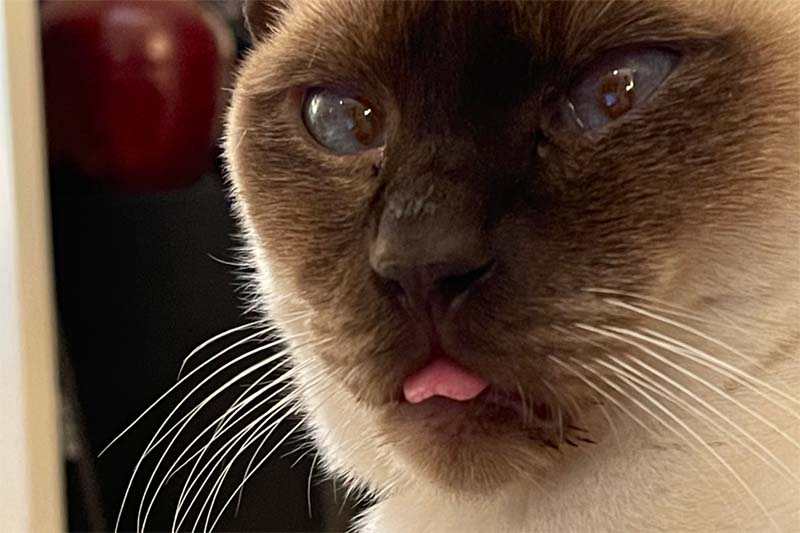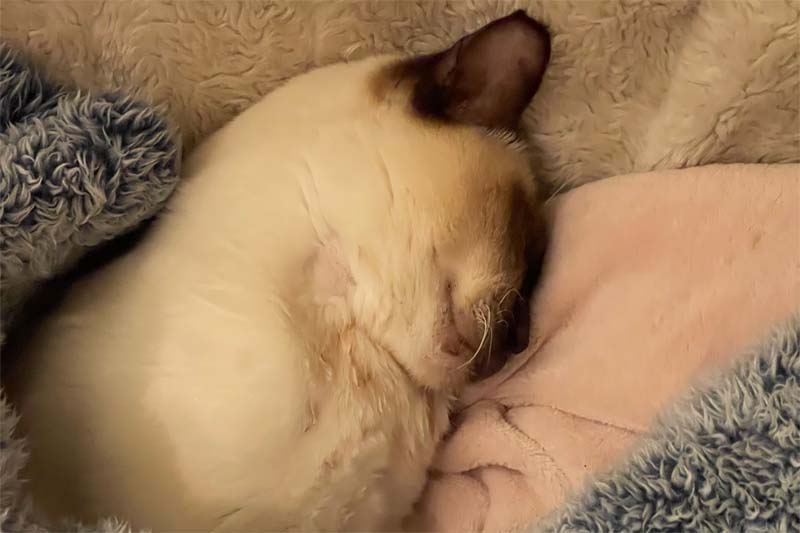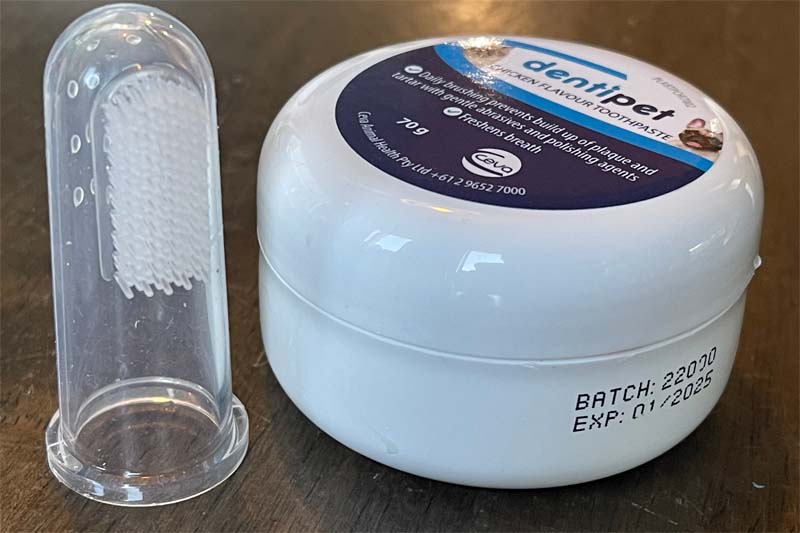Tooth extraction in cats may be necessary in cases of severe dental disease, bone loss, fractured teeth, and resorption. Cats that do not receive proper dental care and those that have dental diseases such as tooth resorption are at the highest risk.
Periodontal disease in cats is extremely common. It is widely believed that 85% of adult cats over the age of 4 are affected. This common condition is caused by a build-up of plaque, a sticky biofilm, that solidifies along the gum line and between the teeth to form tartar, resulting in inflammation of the gums (gingivitis). Left untreated, the bacterial toxins and resulting inflammation cause pockets to develop between the teeth and gums that allow bacteria to descend deeper into the dental tissue and destroy the supportive structures of the teeth. This condition is irreversible and will ultimately lead to pain and tooth loss.
Risk factors
Risk factors for periodontal disease include breed predisposition and poor dental care. There is a higher reported incidence of periodontal disease in Burmese, Siamese and Maine Coons. Other factors such as autoimmune disease and poor nutrition can be risk factors as well.
How long does it take for a cat to recover after dental extraction?
The recovery period will depend on the number of teeth removed as well as the age and overall health of the cat. A single extraction will generally have a shorter recovery period than multiple extractions. As a guide, it should take between 7 – 14 days for a cat to fully recover from dental surgery.
What to expect after a dental extraction
After an episode of general anesthetic, you may initially notice signs of sleepiness, but this will resolve over the next 12-24 hours. Nausea is common after general anesthetic and the veterinarian will likely recommend the cat eat a small meal following discharge.
It is normal for the cat to experience pain after dental extraction, this can be managed with analgesics the veterinarian will have prescribed.
Some swelling, blood staining and drooling are normal for the first few days until the gums heal.
Cats who have had their front teeth (incisors) removed may have trouble keeping their tongue fully inside the mouth (affectionately known as a blep). This is completely normal and should not bother the cat.

Post-dental extraction care
|
A dental extraction will be performed under a general anesthetic. The veterinarian will schedule a discharge appointment, which is usually the same day as surgery, and will send the cat home with pain relief and in some cases antibiotics. Always administer medications as prescribed and never replace prescription analgesics with human medications, as they are toxic to cats.
Norman, our Tonkinese cat, recently had multiple teeth removed. The veterinarian discharged him with two types of painkillers (gabapentin and meloxicam) and instructed us to keep him inside, in a warm room and feed him a soft diet while his mouth healed. Norman was groggy upon his return home but ate a small amount of food that evening.

The following two days post-surgery, Norman showed little sign of improvement. A skin turgor test revealed Norman was mildly dehydrated. We carefully administered oral fluids via a syringe which seemed to pep him up, and shortly afterwards he ate a small amount of food, with painkillers mixed in. If the cat is not interested in food, warming it up can help stimulate the appetite.
If your cat is reluctant to eat, you may offer strong-smelling food such as canned tuna or cooked chicken breast to entice them to eat. Cats can become very ill very quickly if they do not eat regularly, so if you cannot get your cat to eat within 24 hours of the surgery, contact your veterinarian immediately.
Normal saw the veterinarian for his follow-up check seven days post-surgery and received a clean bill of health. His gums had healed and no further medication was required.
When to contact your veterinarian
- Continued dull or listless behaviour more than 24 hours post-surgery
- If the cat has not eaten within 24 hours
- Excessive bleeding
- Pawing at the face
- Facial swelling
- Unpleasant odour from the mouth
Can cats eat dry food after dental extraction?
Cats should be fed soft food for the first few weeks until the gums have fully healed and to avoid displacing the sutures from the extraction site. While wet food is preferable for cats in general, some cats who have lost most or all of their teeth will eat dry food, once their mouth has healed. Others may prefer to eat soft food. If the cat is on a prescription or therapeutic diet to manage or treat an underlying health condition that is not available in a wet formula, the veterinarian may recommend the cat continue the diet, but softened with water.
How to prevent dental problems
Dental care
Brush the teeth with a pet toothbrush and flavoured toothpaste (never use human toothpaste) daily to remove plaque from the teeth. Dental care should begin in kittenhood, this will ensure the cat becomes used to having his or her mouth handled.

Regular home check-ups

While most cat owners are not veterinarians, a monthly at-home dental check can in some cases pick up any changes early. Gently lift up the lips and look at the gums and teeth. Look for redness along the gum margins, visible plaque or broken teeth, which should be checked by a veterinarian as soon as possible.
Oral care products
There are a number of oral care products on the market that are designed to prevent or treat the build-up of plaque on the teeth. Speak to your veterinarian about oral care products that can prevent the build-up of tartar and plaque on the teeth.
Company |
Product |
Type |
Manages |
Availability |
| Hill’s Pet Nutrition | Hills t/d | Diet | Tartar and plaque | Prescription |
| Hill’s Pet Nutrition | Science Diet Adult Oral | Diet | Tartar and plaque | Non-prescription |
| Purina | PURINA PRO PLAN Veterinary Diets DH Dental Health Feline Formula |
Diet | Tartar and plaque | Prescription |
| Royal Canin | Royal Canin Feline Dental Diet | Diet | Plaque | Non-prescription |
| HealthyMouth LLC | Cat: ESSENTIAL HealthyMouth Anti-plaque | Water additive | Plaque | Non-prescription |
| TropiClean | TropiClean Fresh Breath Oral Care Water Additive For Dogs and Cats |
Water additive | Plaque | Non-prescription |
| Virbac |
Aquadent Fr3sh Dental Health
|
Water additive | Plaque | Non-prescription |
| HealthyMouth LLC | Cat: ESSENTIAL HealthyMouth Anti-plaque | Oral spray | Plaque | Non-prescription |
| HealthyMouth LLC | Cat: ESSENTIAL HealthyMouth Anti-plaque | Oral gel | Plaque | Non-prescription |
| Tropiclean | Fresh Breath – Clean Teeth Gel for Cats | Oral gel | Tartar and plaque | Non-prescription |
| Greenies | Feline Greenies Dental Treats | Treats | Tartar | Non-prescription |
| Troy | Plaqueoff | Powder | Plaque | Non-prescription |
| Vetnex | Plaque Control | Chews | tartar and plaque | Non-prescription |
Frequently asked questions
Do cats feel better after tooth extraction?
Initially, the cat will experience discomfort and pain after dental extraction, however, long term, they will feel better. Cats are stoic creatures and hide pain well, however, that doesn’t mean they are not in pain. The removal of damaged and diseased teeth will profer relief.
What should I feed my cat after dental surgery?
Canned food or moist cat food is necessary for cats post-dental surgery. If they are reluctant to eat tuna or salmon may be offered short-term to entice them to eat.
How much does it cost for a cat tooth dental extraction?
The cost will vary depending on the condition of the teeth and the number of extractions. Tooth extractions should always be associated with a dental prophylaxis (cleaning) and dental x-rays. The cost will typically be between $500 and $1000 but will vary widely depending on the number of tooth extractions that are necessary. This price will generally include a general anesthetic, a cleaning, dental x-rays, intravenous fluids, surgery, medications, and a post-surgery check-up.
How do I know if my cat’s teeth hurt?
Signs can be subtle. Cats will often continue to eat despite dental pain. Signs to look for include drooling, reluctance to eat, dropping food, bad breath, and pawing at the mouth.
